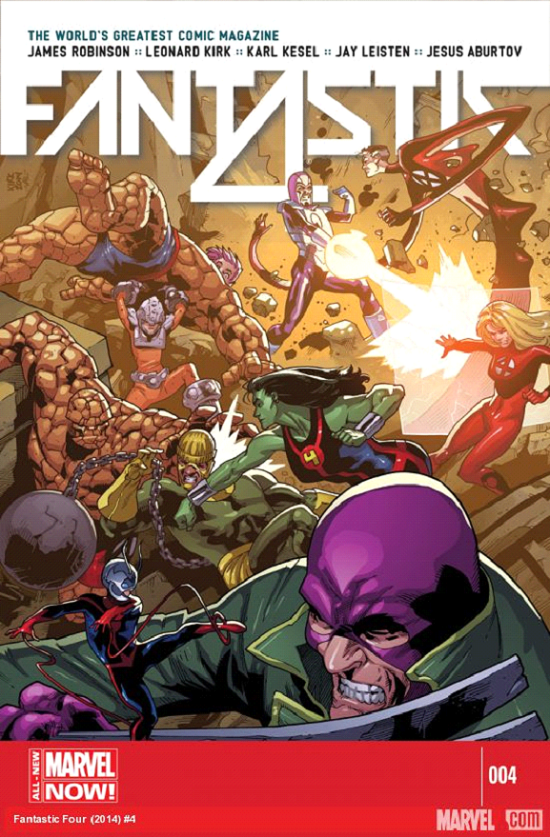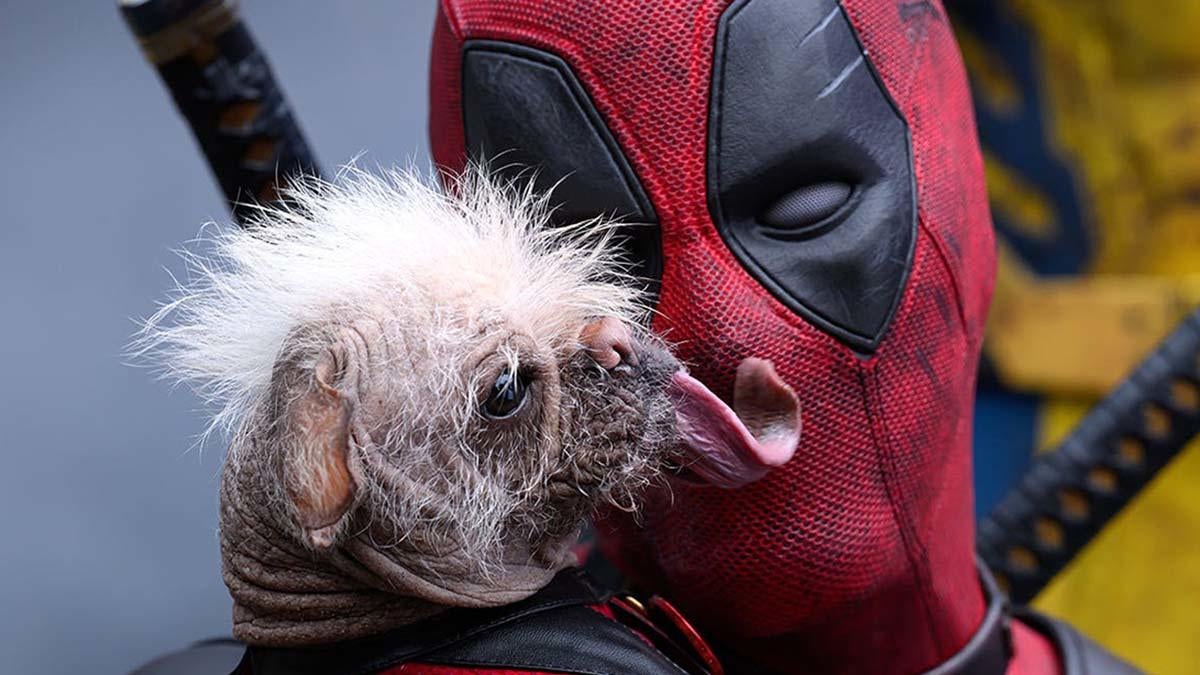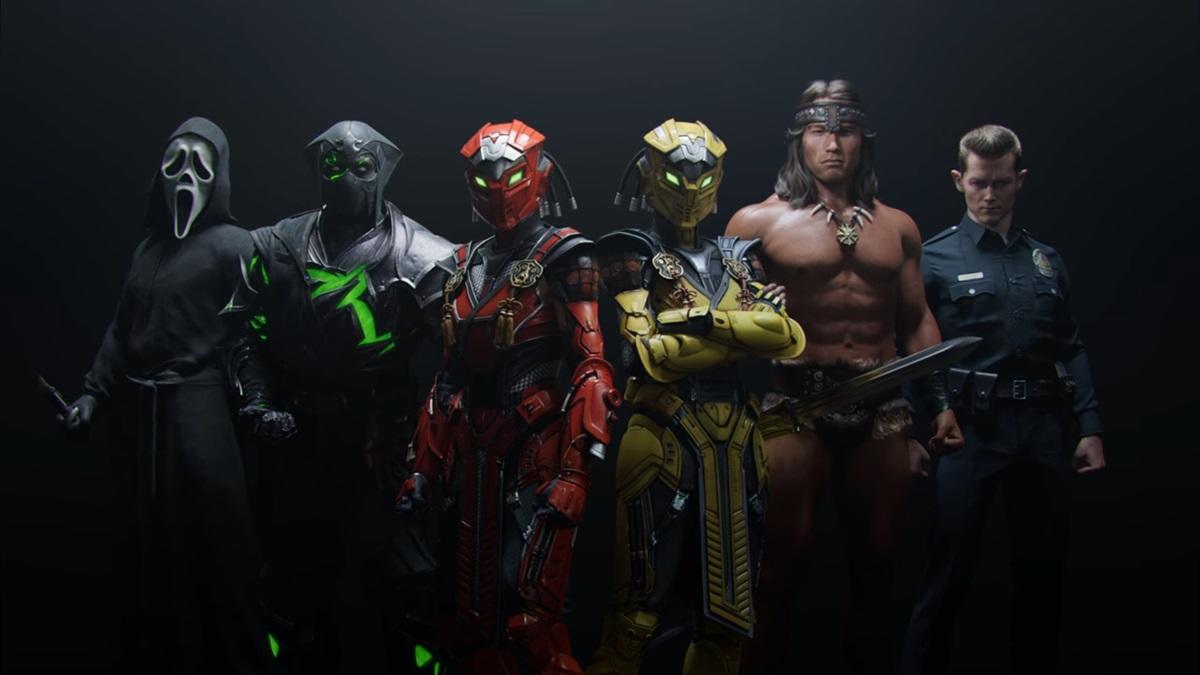Fantastic Four #4 Review: Clobberin' Time
So, after the tour de force that was Robinson, Kirk, and Aburtov’s Fantastic Four #3, how does [...]

So, after the tour de force that was Robinson, Kirk, and Aburtov's Fantastic Four #3, how does #4 hold up? Pretty well. It's mostly a fight scene, but a fight scene with a purpose and plenty of great character moments. While it was going to be hard to top last issue's barrage of call-outs, references, and character building, this issue does an admirable job of providing engaging action and throws in an appearance by most of the "substitute FF," both of which serve to keep the reader thoroughly engaged in the series. We also toss another mystery on the pile, only adding to my excitement for future issues. Without further ado, let's get into the breakdown… SPOILERS!!!

The Good: So, like I said, this issue is mostly fight scene. Basically, the Fantastic Four fights the Wingless Wizard and his Frightful Four/Wrecking Crew. The substitute FF (Scott "Ant-Man" Lang, She-Hulk, and Darla Deering) drop by to help put the final kibosh on the baddies, and we end on two items that will likely come into play in future issues. The first is the fact that the Wizard claims to have been hired by a genius smarter than both he and Reed Richards, apparently making this fight a distraction more than anything. The other is that the Fantastic Four have been at least temporarily evicted from the Baxter Building pending a day in court. Let's deal with the writing first. While I've been reading this series, I've also been working my way through writer James Robinson's Starman series from DC Comics via its omnibus edition borrowed from my local library. The further I get into both series, the more I can see Robinson's talent for weaving plot and crafting compelling dialogue. Aside from a few arguable missteps (to be discussed later) he's got all of the characters appearing in this issue dead-on in terms of what they're given to say. I'm particularly appreciative of Johnny's internal monologue delivered via the narrative captions and there's something about the Wrecker's "'cept this time it's you gets clobbered" that works perfectly as working-class dialect and a decent comeback to the Thing. Beyond that, Reed is appropriately tactical and verbose with a certain lack of tact thrown in with the way he casually references Johnny's powerlessness. I also appreciate Susan Richards' immediate concern for the Future Foundation kids when she finds out about the eviction. Finally, while the sub-FF members aren't given a lot to say, what they do say works well and I really appreciate seeing them again. Given the themes of writer Matt Fraction's FF, I was tickled to read Darla's reference to them as a family backed up by She-Hulk. I tend to develop a soft spot for FF supporting cast members and it means something to see them actually pop up, particularly Lang and Shulkie as they're been part of the "family" from way back. As far as plot, this issue was fairly straightforward. Fight, inject further mystery, and end on reveal of eviction. Still, it was handled very well. Going into this issue we had the mystery of the opening of the portal to the Franklin-verse and now we add onto that the mystery of the Wizard's mysterious benefactor. Who is he/she? How many people are actually smarter than Reed Richards? Is this same person responsible for the Franklin-verse incursion? Did he/she somehow foresee Johnny's subsequent de-powering? These are all tantalizing questions that the reader has been handed and I'm excited to find out the answers. Even just the question of the Wizard's benefactor is given added weight by the fact that for the Wizard to acknowledge him/her as an intellectual superior, he/she would have to be quite the imposing intelligence.

I'm also pleased to see how Johnny was handled here. Given the completely in-character reaction he had to losing his powers, namely mature acceptance, it was going to take some event emphasizing this powerlessness to get him to the place where I feel Robinson needs him to be for his narrative of the "Fall of the Fantastic Four" to work. Placing him at the center of a massive fight where he can only watch as his family and teammates struggle against a formidable obstacle and then have his powerlessness used as a lure to trap the bad guys (that's totally how Reed stops them) is an admirable way to start him down this path. I was thrilled to see that he wasn't just sitting the fight out though and did work to try and save civilians. It felt true to the character in a pleasing way. For my final comment on the writing for now, I just have to say that Robinson really surprised me. When I first heard that the Fantastic Four would be evicted from the Baxter Building again, my eyes rolled so hard that I thought they were going to end up on the desk in front of me. Considering that the first time such an event took place was back in issue nine of the Lee/Kirby run, I was ready to write this off as uninspired and frankly hackneyed writing, however; the logic behind this eviction is impeccable. Maria Hill of S.H.I.E.L.D. shows up to slap them with a court order as a result of the Franklin-verse incursion. Reed did create the portal and considering the damage and destruction that its breach caused, it makes complete sense that questions would be asked about Reed's conduct. Also, it seems as though this will lead to actual courtroom scenes with the Fantastic Four which I haven't seen in years and would love to get a chance to read. Finally, the issue actually closes on one of those "introduce twist and close on Fantastic Four looking confused and/or horrified" panels which has been sadly lacking in recent years. It may be nostalgia clouding my recollection but I seem to remember such panels occurring with some regularity in the past, but much less so in recent years. It's also hilarious that Ben's "confused face" is now his now his character image on the intro/recap page of this comic.

One thing that I want to mention which isn't necessarily good, bad, or questionable is the fact that the Wrecking Crew has a new Bulldozer. As this development is genuinely intriguing though, I will put it here in "Good." In this issue, it is revealed that the Bulldozer first depicted in issue three is in fact female, apparently named Marci Camp and daughter of the original Bulldozer Henry Camp. Doing some cursory research online, I can't find any information about Marci beyond this appearance and there seems to be no evidence that Henry died beyond Marci's use of the past tense to describe him in this issue. Chalk this up as just one more mystery that I hope to see play out or have some significance in future issues. Moving away from writing and into the art, I have to say that Leonard Kirk is reliably impressive and engaging. Not being a great judge of inker versus artist contribution, I will also give kudos to Karl Kesel and Jay Leisten. The level of detail that Kirk and the inking team bring to the proceedings is excellent, characters are rendered beautifully, faces are expressive, and Kirk's panel layouts remain in this sweet spot between traditional paneling and more freewheeling modern layouts. I'm not sure there's much more to say beyond calling out some of my favorite artistic touches from this issue. Perhaps my absolute favorite moment is when the Fantasticar is rolling down the street and in a succession of thin panels, the Thing's hand, then She-Hulk's, and finally Lang's hand find a place on it and bring it to a halt as they make a statement about being in this as a team. In a way, this mirrors the iconic "all hands in" image from the very first issue of The Fantastic Four which served to symbolize the formation of the team and which is regularly revisited at key moments. I found this to be a lovely moment beautifully rendered. Mentioning facial expressiveness, on the page preceding the stopping of the Fantasticar, I can't help but get a kick out of the Wrecker's wonderful smugness. Earlier, I mentioned the fantastic final panel of this issue and I'll mention it again here because it wouldn't be nearly as good if Kirk wasn't able to so thoroughly convey the expressions on Sue, Reed, and Ben's faces. I also appreciate Kirk's rendering of She-Hulk. I'm sure that Mike Allred wasn't the first to do this, but being most used to John Byrne's traditional depiction of Shulkie as somewhat slight of frame for her strength, I appreciated Allred's depiction of a beefier upper-body for her during Fraction's FF. Kirk continues this here to great effect and it's nice to see a diversity of body type for female super characters, i.e. not all superheroines need to be thin and willowy.

Finally, also on the art front, I need to compliment Jesus Aburtov on his wonderful coloring work. I have not a single complaint about his depiction of a nighttime New York under siege. One can clearly tell that this is a night scene but there are some interesting light sources and hues utilized, and the colors still jump off the page in a thoroughly engaging manner. I'm not sure what to say except to encourage him to keep up the good work. The Bad: I don't have a ton to say here. The plot seems to be moving along perfectly well and the art is excellent. I suppose the only thing I can really do is nitpick some "off" dialogue. To start with, I don't really get why Susan Richards is so broken up about the Fantasticar being knocked down the block by the Wrecking Crew's Thunderball. Her line of, "No, NOOOO… The Fantasticar!" seems a little forced. I'm honestly not sure why she would be so concerned about the vehicle as it isn't as though they aren't regularly wrecked during such fights. One gets the impression that Reed can knock one of them together in a lazy afternoon back at the Baxter Building. Frankly, I should think she'd be more concerned with trying to prevent herself from incurring whatever nebulous injury Reed later says she sustained in the crash. If she's more concerned about it landing on civilians, then I should think that a difference choice of wording would be in order. This isn't the first time that Robinson has given Sue a questionable line in a fight scene but in the overall scheme of things this is a minor quibble. Speaking of minor quibbles, this is the smallest nit that I've ever picked but I'll pick it anyway. I don't know if this was Robinson, an editor, or a proofreader that resulted in this but in one of Johnny's caption boxes he uses the term "whom." The box in question reads, "The FF – The substitute team, whom I never saw any reason for… until now." I consider myself something of an aficionado of the English language but I try to avoid the term "whom" like the plague. I've never quite understood the rules of when to use it but using it at all is a losing proposition. If you use correctly, you sound like you're trying to be intellectual. Use it wrong, and some intellectual prat will point out your incorrect usage to boost their own ego. Personally, I save the effort and never use it because people who try to correct you when you leave it out just make themselves look like pedantic prigs. The long and the short of it is that I don't know and I don't care if this is a correct or incorrect usage, but it feels wrong to me. More importantly, I don't think that Johnny is the type of character to use the word at all, let alone correctly, anyway.

The Questionable:Where we talk about things that are neither good nor necessarily bad, but are at least a little head-scratching. You'll notice that above I didn't compliment Kirk on his depiction of the fight scenes. I complimented his art overall but I didn't say that I particularly liked the way that he depicted the fight itself. That isn't to say that it's bad, much to the contrary. In the modern style, Kirk did an admirable job of depicting a protracted fight with numerous participants and made it feel exciting and engaging. Personally though, I long for the days when you got more panels per page in a fight and could get a sense of the fight choreography, the back-and-forth, the exchange of blows that shows hero and villain attacking and countering their opponent. To illustrate my point, on one two-page spread in this issue we get what essentially amounts to seven panels (some very small) depicting the Thing and Bulldozer talking and then fighting. The extent of the fighting though is Bulldozer taking one on-panel punch to slam the Thing into what I'm guessing was a theatre of some sort given the hint of a marquee peeking out from the smoke and blast effect. It would have been nice if their dialogue here had taken place over a series of blows and counterblows culminating in this massive strike from Bulldozer. I acknowledge that this is a point of personal preference and so it belongs in this section. Another point about the art, at times the Thing's brow ridge seems to disappear into his head. This is another point of personal preference but it would be nice if it was a bit more prominent overall. Finally, is it just me or does the emblem on the court order that Maria Hill is holding in the last panel of this comic look like an upside-down pair of men's undershorts? Conclusion: I just want to emphasize how minor all of my quibbles really are. This is an excellent book and this is turning out to be an excellent series. This is the most that I've enjoyed reading main-series Fantastic Four in some time and it's a great experience. Lapsed Fantastic Four readers should really jump into the series in these early issues. Folks that haven't read this series before, this is a great place to start. Kudos to Robinson, Kirk, and the rest of the team for putting together a fantastic experience.




